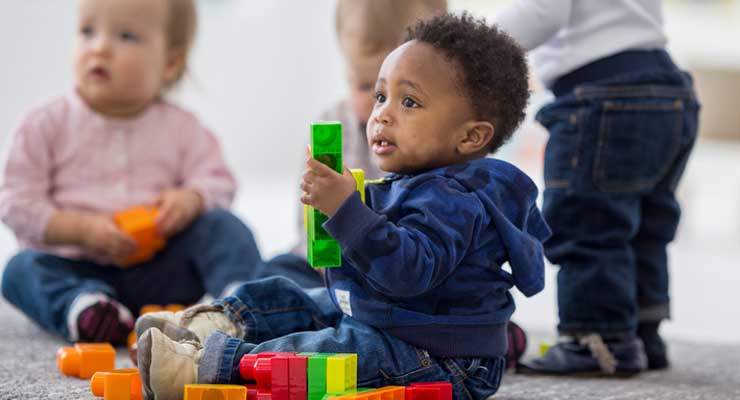For better or for worse, kids love to touch everything. You can take advantage of this natural curiosity and teach your child about all of the wonderful textures that surround us. Experimenting with texture through thoughtful play provides a solid educational foundation in many areas. It teaches children about science and exploration, how to analyze and predict, and also introduces new vocabulary. Educational benefits aside, playing with textures is also just plain fun! Here are some ideas to get you started:
Slippery
Materials: Soap or cooking oil on tin foil, wet ice, banana peels, lotion.
Activity ideas: Have your child lotion up their hands and try to turn a doorknob. If you have more than one kid, they can race ice cubes down a makeshift ramp.
Grainy
Materials: Salt, sugar, or sand in a tub.
Activity ideas: The children can run the grains through their fingers and hands, write their names or draw pictures in it, or try to separate it into two equal piles.
Fluffy
Materials: Cotton balls, animal fur, feathers, bubbles (bubble bath).
Activity ideas: Have your children close their eyes and place a group of cotton balls into their hands. See if they can guess how many they are holding before looking. Toss different fluffy items into the air and see which fall to the ground the most slowly (this would serve as a great introduction to the differences between rain and snow).
Squishy
Materials: Marshmallows, water balloons, play dough, pillows.
Activity ideas: Experiment with changing the size and shape of the object (can it be squished flat? Into a ball? Does it retain its shape or bounce back?)
Rough
Materials: Tree bark, sandpaper, scouring pad.
Activity ideas: Have your child softly touch the materials and ask if they think it would hurt to touch it a lot. The children can use the scouring pad to scrub crayon marks off of a plate and then try to do the same thing with a silky piece of material.
Smooth
Materials: Paper, tabletops, polished stones or pebbles, marbles.
Activity ideas: Have the children roll the marbles over smooth surfaces and then over a rough or bumpy surface. Multiple children can race marbles or toy cars over smooth surfaces.
Bumpy
Materials: Rocks, bubble wrap, Legos.
Activity ideas: Have your children close their eyes and count the bumps on a lego or scrap of bubble wrap. Try rolling bumpy rocks along with smooth rocks and talk about the difference in movement.
You and your children can play with these textures over several sessions with endless possibilities for games, activities, and discussions. To reinforce what they have learned, you can incorporate texture questions throughout the day. When you are reading about an animal at bedtime, you might ask, “Do you think an alligator is rough or smooth?” When your son or daughter is eating finger foods at lunchtime you can ask, “Is that food squishy or slippery?” Your child will have a blast and learn at the same time. Is there anything better?





